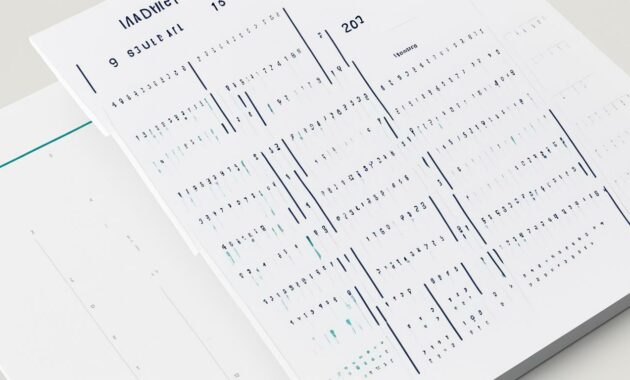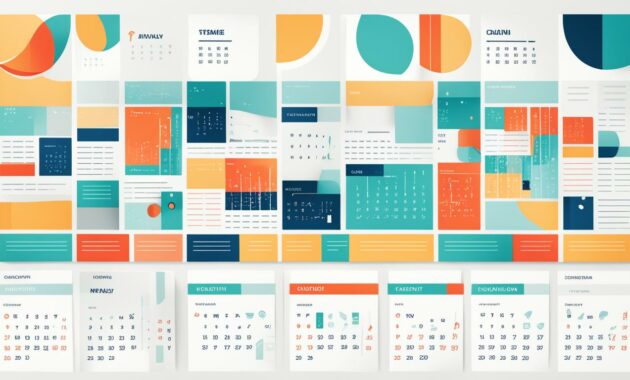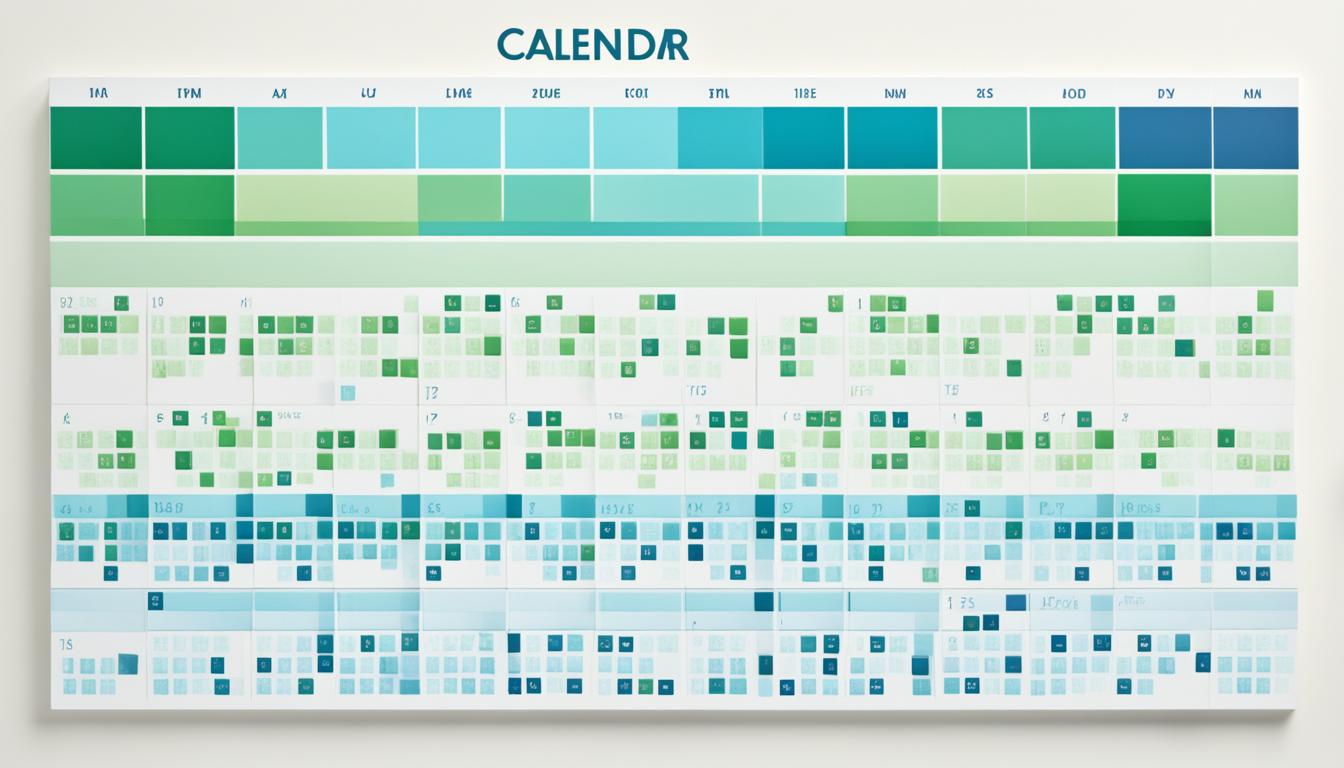In the world of litigation, court scheduling can be hard to keep up with. The Uniform Motion Calendar (UMC) makes it simpler. It helps attorneys and litigants move through the court system better. The UMC is for hearing non-evidentiary motions and other early issues faster, without extra evidence, so the court can manage its cases better and move things along.
The UMC brings together shorter, routine hearings in one place. This way, the court can handle more things in less time, cutting waiting lists and keeping the legal process smooth. With a set schedule from the UMC, lawyers and clients can manage time better, making everything more predictable and causing fewer interruptions.
What is a Uniform Motion Calendar?
A uniform motion calendar, or UMC, is a special court schedule. It’s for handling some types of motions and other early issues quickly and in a set way. This system helps courts deal with many cases by putting all the simple hearings on one schedule.
UMC is for procedural matters like default final rulings and motions not argued. Handling these issues faster means the court can control its schedule better. This helps lessen waiting times and deal with cases faster.
Key Features of a Uniform Motion Calendar
- UMC hearings are typically held on Tuesdays, Wednesdays, and Thursdays at 8:30 A.M.
- Each UMC hearing is strictly limited to a total of 10 minutes (5 minutes per side) to address non-evidentiary motions.
- Certain matters, such as default final judgments and uncontested motions for summary judgment, may be set on the UMC.
- Specially set hearings, which can be scheduled in 15 or 30-minute blocks, are available for more complex matters.
- Parties have the option to appear in person or via Zoom for specially set hearings.
- If a case has multiple motions or a hearing is expected to take longer than 30 minutes, the moving party can request additional time.
The UMC makes handling simple court matters easier. This means judges can organize their calendars better. It also makes things more predictable for lawyers and clients.
| Feature | Description |
|---|---|
| Hearing Schedule | UMC hearings are held on Tuesdays, Wednesdays, and Thursdays at 8:30 A.M. |
| Hearing Duration | Each UMC hearing is limited to a total of 10 minutes (5 minutes per side). |
| Eligible Matters | Default final judgments and uncontested motions for summary judgment may be set on the UMC. |
| Specially Set Hearings | Parties can request specially set hearings in 15 or 30-minute blocks for more complex matters. |
| Appearance Options | Parties can appear in person or via Zoom for specially set hearings. |
| Time Allocation | If a case has multiple motions or a hearing is expected to take longer than 30 minutes, the moving party can request additional time. |
The UMC makes handling simple court matters easier. This means judges can organize their calendars better. It also makes things more predictable for lawyers and clients.
https://www.youtube.com/watch?v=QCP61DHgQ6k
Benefits of a Uniform Motion Calendar
A uniform motion calendar in the judicial system has many important benefits. It makes managing cases easier and improves how the courts work. This helps cases move quicker and makes the system work better for everyone.
Increased Efficiency
With a uniform motion calendar, the court is able to look at more cases quickly. This means less waiting time and fewer cases getting stuck. Courts can use their time better, solving simple problems faster and having more time for harder cases.
Predictability
Having a set schedule makes it easier for lawyers and people in a case to plan. They know when things will happen. This helps lawyers juggle their work better and make sure they’re ready for court dates.
| Benefit | Description |
|---|---|
| Increased Efficiency | Consolidating non-evidentiary motions into a single docket allows the court to hear more matters in less time, reducing delays and backlogs. |
| Predictability | A consistent, predictable schedule provided by the uniform motion calendar enables attorneys and litigants to plan their time and resources more effectively. |
Using a uniform motion calendar is smart for managing cases. It really helps with judicial efficiency and keeping a good schedule for cases. This way, the court can pay more attention to hard cases and keep everything running smoothly.
“The uniform motion calendar is a game-changer in the pursuit of judicial efficiency and case management optimization. It empowers courts to manage their dockets with precision, delivering predictable schedules and streamlined pre-trial procedures for the benefit of all stakeholders.”
Uniform Motion Calendar: Simplify Your Schedule
The uniform motion calendar makes court scheduling smarter. It groups non-evidentiary motions into one list, helping courts manage cases better. For lawyers and the people involved, this means a clearer schedule and less waiting.
This tool helps courts work faster by putting many cases together in one list. With less delay, everyone sees progress on their case quicker. It makes the legal process smoother for everyone.
Using this calendar makes planning easier for lawyers and clients. It cuts down on surprises and lets them handle cases more smoothly. They get a better grip on their work, leading to less hassle for those they help.
The success of the uniform motion calendar leads to better court operations. It focuses more on the key parts of cases, making justice swifter and fairer. It shows how efficiency can improve the legal process for all.

To wrap up, the uniform motion calendar is a big step forward in court management. By putting common motions on one list, it helps everyone. It streamlines the legal system, making things clearer and quicker for those involved. This method is key as courts aim for more organized and effective ways to do their work.
Preparing for the Uniform Motion Calendar
Navigating the uniform motion calendar needs careful preparation. Attorneys should follow the court’s rules closely. They must ensure their cases are presented well.
Attorneys must keep their motions and responses under 10 pages. This limit helps keep arguments clear. They must also upload all relevant documents online before the hearing.
Before the hearing, attorneys should try to resolve disagreements with each other. This helps avoid wasting the court’s time. Clear communication is key.
Hearings on the calendar are very short, usually just 5 minutes. This means attorneys need to be ready. They must focus on the most important issues during their time.
Not following the court’s rules can lead to serious problems. For instance, missing a Case Management Conference could cause a case to be dismissed. It’s critical to understand and obey the court’s regulations.
Thorough preparation is the best way to handle uniform motion calendar cases. It helps attorneys and their clients a lot. It makes the whole process more effective.

Key Considerations for the Uniform Motion Calendar
- Adhere to strict page limitations for motions and responses
- Upload all supporting documents to the court’s online system prior to the hearing
- Engage in good faith conferral with opposing counsel to resolve disputes
- Be mindful of the 5-minute time limit per case
- Comply with the court’s procedures to avoid consequences like dismissal or sanctions
Attorneys can make the uniform motion calendar work smoothly by following tips like these. They help both their clients and the court. This leads to better management of the court’s caseload.
Local Rules and ProceduresAdministrative Order on Uniform Motion CalendarDetailed Division Procedures
Courtroom Etiquette and Decorum
It’s key to keep proper behavior in the courtroom. Whether you’re in the room or on video, follow professional rules. This makes the uniform motion calendar hearings run well.
Wear the right clothes. Lawyers and those involved should not wear things that are too casual or stand out. This shows respect for the law and the court.
Stay quiet and still during video conference meetings. Your space should be free of noise and things that distract. This is so everyone can hear clearly and the meeting goes smoothly.
Act formal. Treat a video court meeting like you would a face-to-face one. Don’t move around a lot, look at the camera, and be polite to everyone.
| Courtroom Etiquette Statistics | Percentage |
|---|---|
| Courtroom attendees expressing need for clearer guidelines on proper conduct | 72% |
| Lawyers reporting instances of disruptive behavior by clients or witnesses | 48% |
| Judges believing that enforcing courtroom etiquette positively impacts efficiency | 95% |
| Legal professionals finding that lack of decorum leads to court schedule delays | 60% |
| Court cases experiencing disruptions due to improper attire or behavior | 40% |
| Courtroom etiquette violations related to electronic device usage | 85% |
By following these rules, lawyers and those involved help make the uniform motion calendar work better. They also help with the whole legal process.
“Proper courtroom etiquette is not just a matter of decorum, but a fundamental aspect of ensuring the smooth and efficient administration of justice.”
Tips for Maximizing Efficiency
To make things run well on the uniform motion calendar, attorneys need to do a few things. They must quickly cancel any hearings that are not needed because the issues are already settled. This lets the court use that time for other cases, cutting down on wait times.
Attorneys should also make sure all needed documents are ready for the hearing. They need to follow the court’s rules on how many pages and what’s required. This helps the judge go through the documents quickly. Doing these steps helps make the whole calendar work better and speeds up how quickly things get settled for clients.
Lastly, it’s good to know the uniform motion calendar mostly deals with non-evidentiary issues in a set way. Attorneys need to be clear in their arguments and ready to talk about them. Following these suggestions helps the calendar run smoothly and gets things done on time for their clients.

